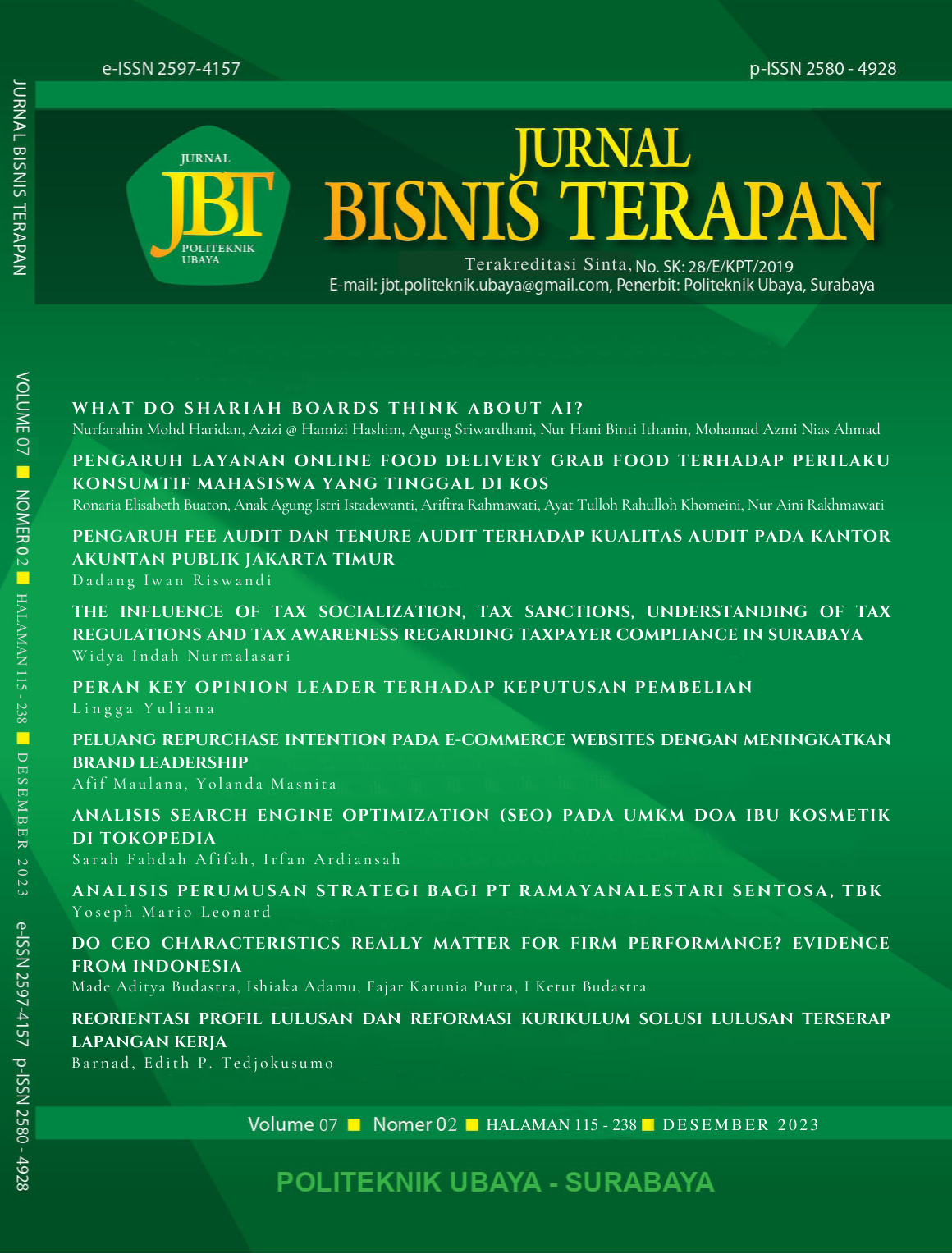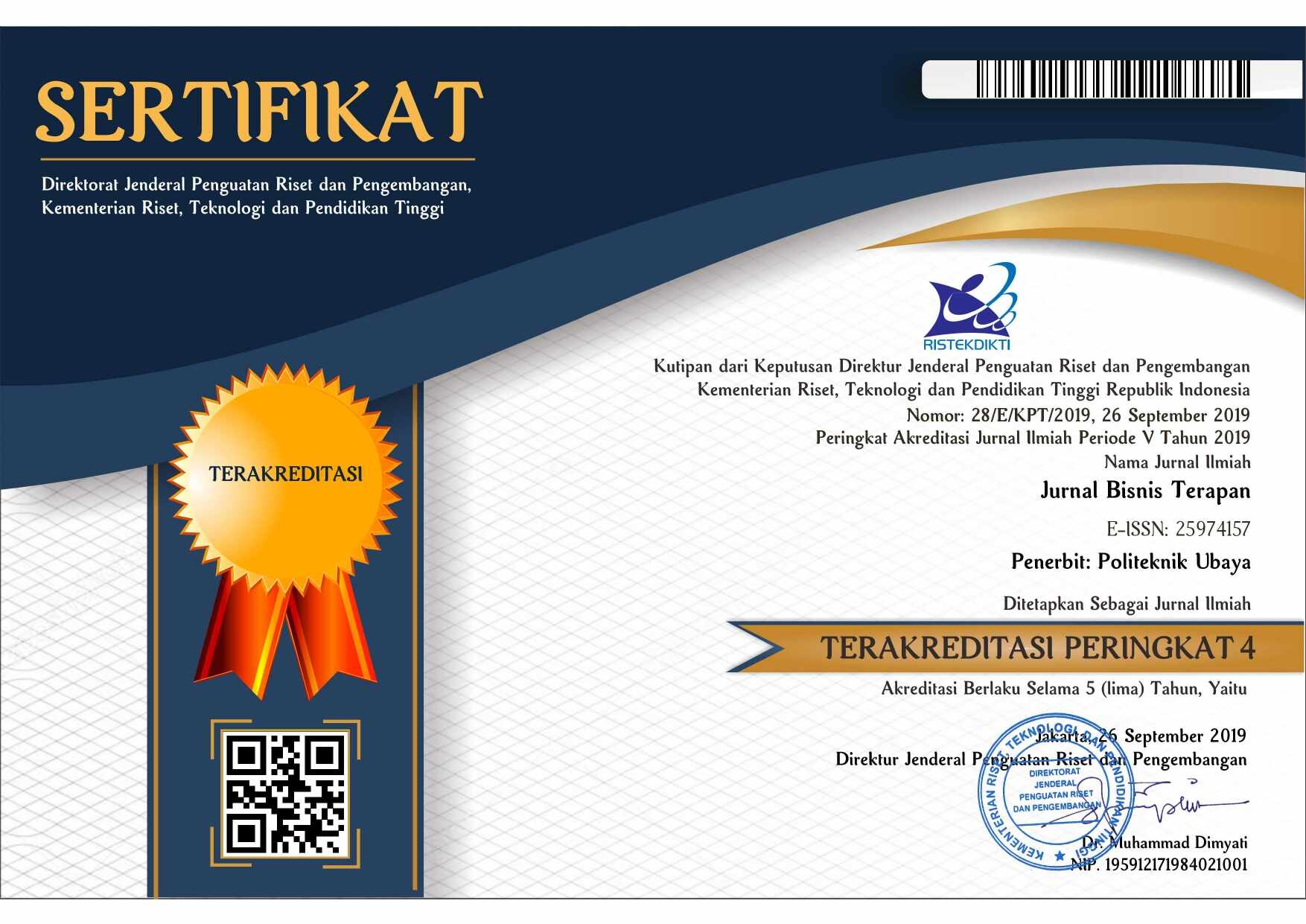REORIENTASI PROFIL LULUSAN DAN REFORMASI KURIKULUM SOLUSI LULUSAN TERSERAP LAPANGAN KERJA
 Abstract Views:
204 times
Abstract Views:
204 times
 PDF Downloads:
211 times
PDF Downloads:
211 times
Abstract
Education as a means to increase knowledge and skills and can improve welfare. The higher the level of education, the more experience one gets and the more complex the problems that can be solved, and this has an impact on increasing income. Advances in information and communication technology have changed human civilization. The development of science and technology has made how many jobs done by humans have been taken over by machines so that the remaining work is very little and more specific for humans to do.
The curriculum given to the students aims to provide a variety of knowledge and skills so that they can complete various assignments and be placed in various positions. This condition does not meet the needs of the world of work today, because workers only do specific jobs. Another challenge is that several large companies no longer require a diploma for their prospective workers; instead, it is based on the skills certification mastered by future workers.
This phenomenon is a challenge for education providers to reorient the profile of graduates who have been determined. One way is to reform the curriculum to improve the student's skills and mastery of digital information literacy, data processing, visualization, and modern office technology so that graduates can work in the modern office era.
The narrative above is the premise of the descriptive research that the writer conducted based on various sources of documentation, literature, and questionnaire results from alumni.
Downloads
References
Barnad. (2021). Learning Material in Multimedia Supporting Online Learning. Psychology and Education, 58, 5988–5994. https://doi.org/https://doi.org/10.17762/pae.v58i2.3076
Bloom, B. S., Engelhart, M. D., Furst, E. J., Hill, W. H., & Krathwohl, D. R. (1956). Taxonomy of Educational Objectives: The Classification of Educational Goals. Handbook I: Cognitive Domain. New York: David McKay Company, Inc.
Hidayat, R. (2017). Pendidikan Vokasi dan Link and Match untuk Memperkokoh Daya Saing Bangsa. Jurnal Penelitian dan Pengembangan Pendidikan Vokasi, 1(1), 1-6.
Jacobsen, D. A., Eggen, P., & Kauchak, D. (2009). Methods for Teaching (8th ed.). Yogyakarta: Pustaka Pelajar.
Kemdikbud. (2020). Kebijakan Kampus Merdeka (Independent Campus Policy). Ministry of Education and Culture Republic of Indonesia Report.
Presiden Republik Indonesia. (2003). Undang-Undang Republik Indonesia nomor 20 Tahun 2003 Tentang Sistem Pendidikan Nasional.
Presiden Republik Indonesia. (2012). Undang-Undang Republik Indonesia Nomor 12 Tahun 2012 Tentang Pendidikan Tinggi.
Sudjana. (2005). Metode dan Teknik Pembelajaran Parsipatif. Bandung: Falah Production. Susilawati. (2020). Merdeka Belajar dan Kampus Merdeka dalam Pandangan Filsafat
Pendidikan Humanisme. Sikola: Jurnal Pendidikan dan Kajian Pembelajaran , 2 (3), 207 - 219.
Tohir, M. (2020). Buku Panduan Merdeka Belajar - Kampus Merdeka.
Suryadi, D. (2015). Konsep Pendidikan: Pendekatan Interdisipliner. Bandung: Refika Aditama. UNESCO. (2015). Education 2030: Incheon Declaration and Framework for Action for the
Implementation of Sustainable Development Goal 4. Paris: Author.
Utomo, S. B. (2016). Peluang dan Tantangan Implementasi Program Link and Match dalam Pendidikan Vokasi di Indonesia. Jurnal Pendidikan Vokasi, 6(3), 322-336.
World Bank. (2012). Better Skills, Better Jobs, Better Lives: A Strategic Approach to Skills Policies. Washington, DC: Author.


This work is licensed under a Creative Commons Attribution-NonCommercial-ShareAlike 4.0 International License.

Ciptaan disebarluaskan di bawah Lisensi Creative Commons Atribusi-NonKomersial-BerbagiSerupa 4.0 Internasional.
-
Articles published in Jurnal Bisnis Terapan are licensed under a Creative Commons Attribution-NonCommercial-ShareAlike 4.0 International (CC BY-NC-SA 4.0) license, which permits anyone to copy, transform, or redistribute articles for any lawful purpose in any medium, provided appropriate credit is given to the original author(s) and Jurnal Bisnis Terapan is recognized as its original publisher. A link to this license should also be provided. Any derivative work of an article published in Jurnal Bisnis Terapan must also be shared under the same (or compatible) license.
-
Both copyright and publishing rights on articles are retained by the respective author(s), without restrictions. Only a non-exclusive license is granted to Jurnal Bisnis Terapan to publish the article and identify itself as its original publisher.

 DOI:
DOI:






